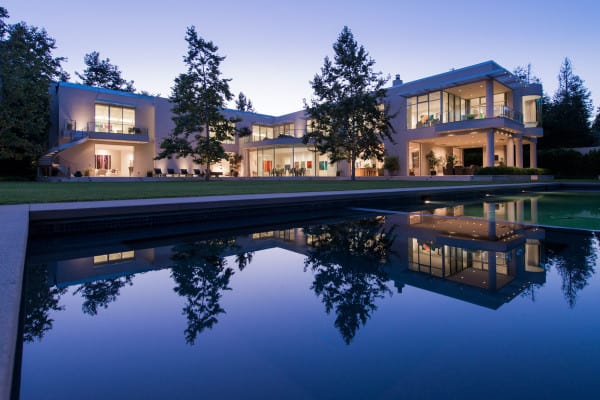The Ultimate Handmade Hardtail Bike Guide

Hardtails are a great choice for beginner and intermediate riders. These bikes are easy to pedal, sturdy, lightweight, and won’t break the bank, thus making them an excellent alternative for anyone who wouldn’t want to go overboard with their commuting needs. Used on all terrains, including downhill riding and cross-country racing, hardtail accommodates suspensions and gearing options to please any aggressive rider.
What’s more? They offer more versatility than a more complex suspension bike. But how does a biker choose a hardtail? As with most biking decisions, the choice of hardtail largely comes down to personal preference. A biker may customize a hardtail by choosing a frame size, geometry, material, fork, and seat post option. Before discussing such configurations, let’s take a look at hardtail types.
Types of Hardtail Bikes
Although there are many hardtails within the bike market, not all are created equal. And they are differentiated even further. From a categorical perspective, hardtail bikes are of four types:
Trail Hardtails
With a lightweight design and a suspension-like feel, trail hardtails are the perfect versatile bikes. They allow a racer to explore all the technical terrain. Moreover, the frame is built to withstand both bumps and drops. It also spots more relaxed angles. Other features include an improved gear range, wider bars, and shorter stems. Bikers can get front travel of 100 to 150mm.
Think of a trail hardtail as a cross between an XC and a mountain bike. It achieves a balance between ascents and descents, thanks to its robust suspension. Whether commuting, road or mountain training, or on a cross country romp, this bike has it all covered. It is suitable for cyclists who are unsure about their cycling specialties.
XC Hardtails
Cross-country hardtails are the most popular bikes for adventure riding. Designed to tackle rocks, roots, and puddles, these bikes have flat bars that allow easy grip and steep top tubes for enhanced stability. They provide front travel of 75 to 100mm. Their stretched frames provide comfort for long-distance cycling.
Many of them feature large volume, slack seat tubes and are generally designed to accommodate suspension forks. This makes these bikes ideal for racing and hard trail riding, as they’re stable, and offer enough compliance to soak up the bumps and terrain.
Enduro Hardtails
A hardtail designed to accommodate aggressive downhill riding, the “Enduro” withstands more than a few crashes. For the majority of riders, the Enduro is a decent choice, but it’s best for riders who prefer a more heavy-duty, but flexible frame. The frame is constructed with heavier tubing, usually aluminium. This allows the frame to support the rider’s weight more efficiently.
Enduro hardtails have 140 to 170mm of front travel due to their slack head tubes, shorter stems, and large wheelbases. Even at maximum speeds, riders maintain control. They are comparable to gravity bikes, however this time, lighter and easier to repair.
Electric Hardtails
Electric hardtails are similar to regular hardtails but they include powertrains that make them move faster and easier than they would otherwise. These bikes also have increased versatility and an excellent riding position. The power is provided by an electric motor and pedal assist, which makes for an easier ride.
Electric bikes are becoming increasingly popular for commuters who find it more convenient to commute with an e–bike than with a normal bike. The electric-assist makes it easier for them to make the short trip to work and back without having to push the bike. Beginners have also found these bikes easier to ride.
A DIY Approach to Custom Hardtails
Crafting a hardtail from scratch is time-consuming and more expensive than purchasing one from a manufacturer. But the journey is well worth the result. Besides, there is an exception to everything. The cost of a handmade hardtail can be extremely cheap if the components used are sourced from existing bikes.
Besides, a biker has more freedom to choose between different materials and incorporate them. The only limiting factor is one’s creativity, of which YouTube videos are available to provide additional guidance. That being stated, here are some factors worth considering.
The Frame
It’s simple enough to build a hardtail. For starters, the frame is assembled using tubing. It’s simply a tube from which the seatpost, chainstays, and handlebars are attached. Frames come in different configurations and materials. For newer hardtail frames, bikers can stick to boost spacing, which measures 12x148mm.
On the other hand, older models would require the thru-axle frame, measuring 12x142mm. Some riders even opt for super-boost spacing (12x157mm).
Brakes
Disc brakes are a must when making hardtails. For most hardtails, the frame design simply doesn’t allow for a mechanical disc brake. Hence, the need for a hydraulic activated brake system is imminent. Although pricing ranges from $80 to $400 or more, bikers get increased braking performance. Older bike frames can accommodate V-brake or cantilever callipers.
Seat Post
In a typical hardtail bike, the seat post usually has an integrated seat. However, with a homemade bike, the seat post requires manual fitting. This post compriseseither aluminium or carbon fibre and has a threaded interior that fits into the frame.Choose a diameter of either 30.9mm or 31.6mm. Some cyclists might prefer 34.9mm. Size 27.2mm works well for some XC hardtails.
Press-Fit Bottom Bracket
Bikers can select from a wide range of standards, including BB30, BB90, BBRight, PF30. Rather than threaded, like their threaded-bottom counterparts, the bearings fit into the frame. Before installing this component, ensure that it is the right match for the hardtail spec.
Steerer Tube Diameter
The steerer tube or head tube serves as the primary bearing or pivot for the frame. As such, the frame’s head tube must have a matching diameter with the fork. Newer models of XC hardtails spot tapered steerer tubes: 11/4” at the bottom, taper to 11/8” at the top. Regular hardtails feature 11/2” tapering to 11/8”. Older models use 11/8” steerer tubes.
Other Components
Hardtails’ disk brake rotors might be six-bolt or centre-lock. Tubeless rims and tires are recommended. Likewise, the cassette should match the cassette driver on the rear wheel. For example, an SRAM cassette would complement an XD driver. For the fork, select a matching front axle as well.
Summary
Custom hardtails require attention to detail in both aesthetics and functionality. There’s the obvious frame-specific requirement. In addition, components choices can be a complicated matter. But the result of a custom hardtail is an outstanding machine that can be ridden in and out of the most technical terrain.











Leave a Reply